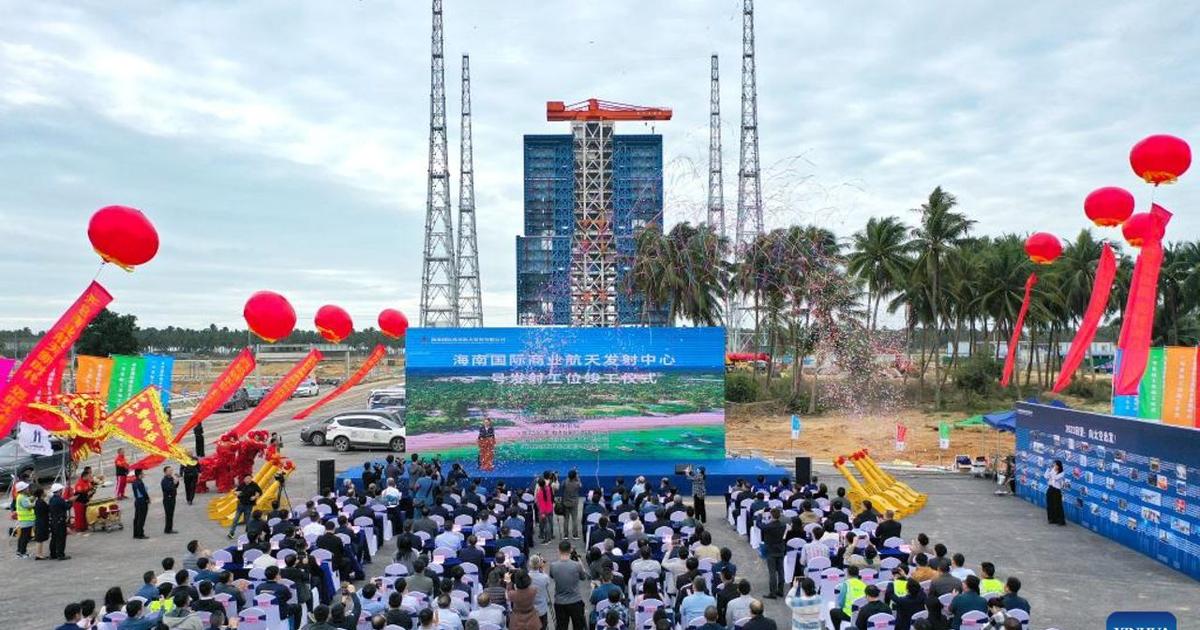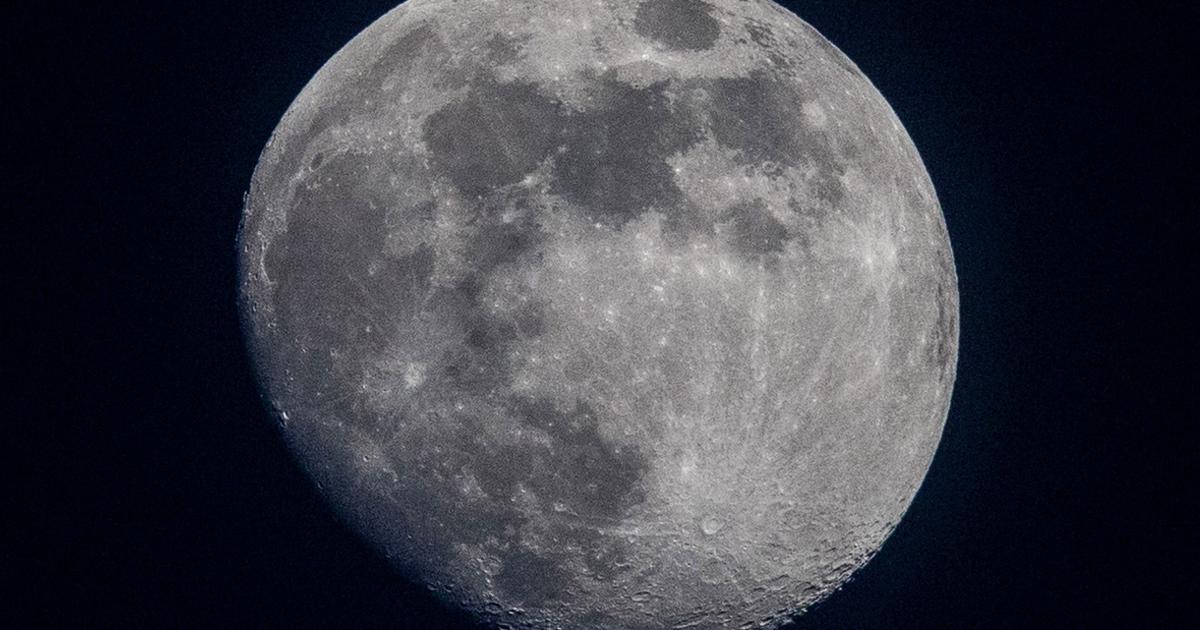China's Mars robot Zhurong is exploring the red planet, a space station is under construction: the country has started a rapid catch-up in space.
The USA is threatened with further competition with Beijing.
Beijing / Munich - First the main module for a space station reaches its orbit, then the landing on Mars follows: China's space travel news is really rolling in these days. At the end of April, a launcher launched the first and largest module for China's planned space station into orbit. In mid-May, a rover named Zhurong landed on Mars. A few days later he radioed the first images to earth. And on the weekend of Pentecost, he set out to explore the surface of the Red Planet. The rover with six wheels and four solar panels is named after an ancient Chinese fire god with three eyes. This fire god is now on a 90-day mission, according to the Chinese state newspaper
Global Times
To collect data on the properties of the soil and subsoil, on potential water ice deposits as well as the local climate and the Martian atmosphere.
China's space program has recently picked up speed rapidly.
Important milestones in the race to catch up in space in the last 12 months were, for example, the rocket launch with the last satellite for the construction of the Beidou navigation system, China's competitor for GPS.
In December, China became only the third country in the world to bring lunar rocks back to earth.
China landed on the moon for the first time in 2013, and then on its far side in 2019.
In order to assemble the manned space station Tiangong - in German "Heavenly Palace" - several more space flights are planned this year and next.
Beijing also has a manned moon mission in mind.
At the same time, private space companies are emerging based on the SpaceX model - with names such as iSpace, Space Trek or Galactic Energy.
China and USA: competition in space too
The government is very determined in planning the space program - it hardly deviates from a white paper on space travel published in 2016. Only the corona pandemic delayed the most recent starts from 2020 to this year. Success in space is said to be the icing on the cake of the country's economic rise to the top division of world powers. Zhurong, Tiangong and Co. are not only supposed to carry out important research, but are also a symbol: Not only the USA, Russia and Europe can do space travel. If the obsolete international space station ISS ceases to operate in the coming years, China would be the only nation operating an outpost in space.
Competition between China and the USA is also emerging in space.
Thomas Zurbuchen, head of the US space agency NASA.
congratulated the Chinese space agency after Zhurong's landing on Twitter and wrote: "Together with the global research community, I am looking forward to the important contributions that this mission will make to the understanding of mankind for the red planet." At the same time, people are nervous in Washington.
With the leading space travel nation USA, space travel, in contrast to China, comes up again and again - not least because of the horrendous costs associated with it.
USA senses competition in space - but is still years ahead
At a hearing in front of the US House of Representatives last week, NASA Administrator Bill Nelson pulled out one of the first photos Zhurong sent warning of American complacency in space exploration. China is a serious competitor, Nelson said
at the hearing,
according to
Space News
magazine
: "They will bring people to the moon." Nelson called on the US to get its manned space program going. For this purpose, funds from the gigantic infrastructure program planned by US President Joe Biden should be made available.
The US is still years ahead of China.
Only the US has landed and operated robots on Mars so far.
The Soviet Union managed to land a rover on Mars as early as 1971 - but contact was lost after 110 seconds.
On its first interplanetary mission, China succeeded in successfully deploying an orbiter, a lander and a rover - proof of the high speed of the program.
The USA had gradually approached the Red Planet over many years.
China: Mars rover now on an exploration tour
China's Zhurong is now rolling at a maximum of 200 meters per hour through the Utopia Planitia region of Mars, around 1,800 kilometers from the US rover Perseverance.
It has been on Mars since February with a mini-helicopter - and the US's fifth robot there.
The others are called Sojourner, Opportunity, Spirit and Curiosity.
The first photos released by the Chinese space agency CNSA show the vehicle rolling out of the landing capsule, as well as the black and white photo of a stony and dusty plain.
The images are transmitted via the orbiter Tianwen-1, which is orbiting around Mars and is always in contact with Zhurong.
It had taken a few days for the rover to report after landing.
Experts disagreed that there were problems.
But after a few days the robot activated as intended.
+
First pictures from China's Mars rover Zhurong: 90 days of research on the red planet
© Handout / dpa
The international community is watching China's ambitions with eagle eyes. Research collaborations, for example for the Tiangong space station, have hardly existed so far - and are not desired, especially in the USA. Instead, there is great suspicion. After the Tiangong module reached orbit, US experts feared the worst: the remains of the Long March 5B launcher will fall uncontrollably to Earth. There has been criticism that China's missile did not contain a controlled crash system. China denied these allegations; in the end, the parts ended up in the ocean as Beijing predicted - whether controlled or not was initially unclear. But it is clear that space travel has long since reached the political sphere. The USA sees its supremacy in space in danger. China, on the other hand, sees it as naturalTo participate in the development of space - and to play a leading role in this in the future.
China: Missions also planned to the moon
And the moon also comes into play.
China's equally ambitious lunar program is named after Chang'e, a legend that lives on the earth's satellite.
At a Royal Aeronautical Society conference last week, CSNA Vice Secretary-General Yao Jianting announced, according to
Space News
, that given the success of 2020, China is planning a second mission called Chang'e 6 to collect samples from the moon in 2024 or 2025.
Two more landing missions are planned in the years up to 2028.
According to this, an international lunar research station is to be built between 2030 and 2035 in cooperation with countries like Russia.
Whether the USA or Europe will be invited or want to participate is still in the stars.
ck






/cloudfront-eu-central-1.images.arcpublishing.com/prisa/Q2GFUQLBLVDFDE4G6U6GH2UFJE.png)
/cloudfront-eu-central-1.images.arcpublishing.com/prisa/ZLW56GYGEBEJLPNDSNPUK2NJZE.jpg)







